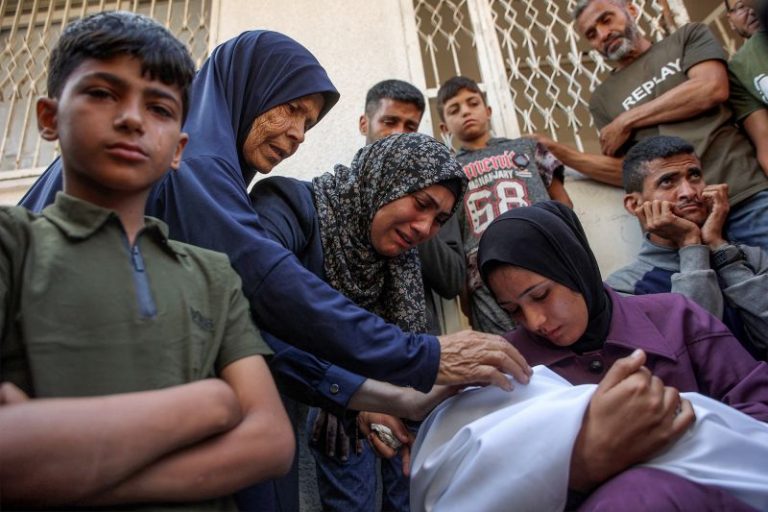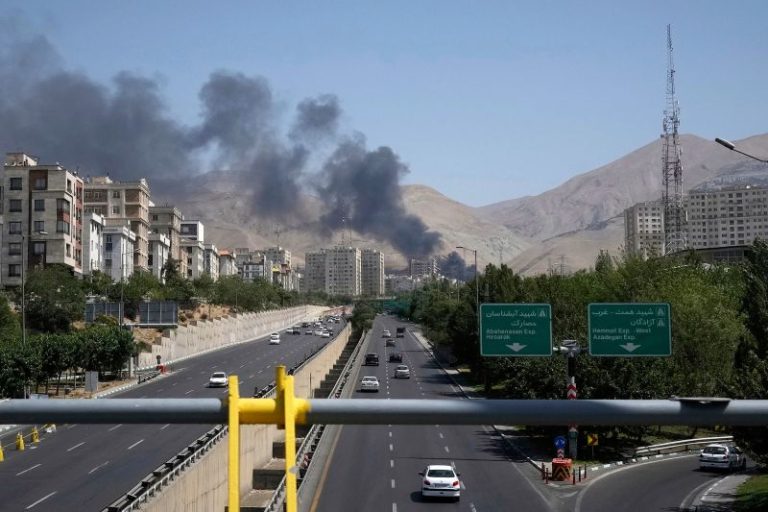The young girl sits on the dusty floor, clutching her father’s shoe close to her chest as she cries and screams in anger. Bisan Qwaider is unconsolable. Her father has just been killed while trying to get food for her and her 10 hungry siblings.
Shadi knew travel to the area was dangerous: Ma’an had been under an Israeli evacuation order for some time and has come under Israeli bombardment. But, despite the risk, his children were hungry and he believed he could get some food there for them.
Gaza is facing a hunger crisis. A UN-backed report published in late April warned that one in five people in Gaza were facing starvation and that the entire enclave was edging closer to famine. The situation has only worsened since then, according to the UN.
Sha’ath said Qwaider was killed in an airstrike and his body was pulled from the rubble on Sunday. He is one of hundreds of people who have died while attempting to find food in Gaza in recent weeks, according to Gaza health authorities.
In late May, Israel partially lifted an 11-week total blockade on Gaza, but humanitarian organizations say the aid entering now is only a tiny fraction of what is needed.
“Without immediate and massively scaled-up access to the basic means of survival, we risk a descent into famine, further chaos, and the loss of more lives,” the UN’s humanitarian chief Tom Fletcher said last week.
The humanitarian catastrophe in Gaza has sparked outrage around the world, recently prompting even some of Israel’s closest allies to speak up.
France, the United Kingdom and Canada issued a rare statement last month criticizing Israel and threatening “concrete steps” if the situation in Gaza does not improve. The UK paused trade negotiations with Israel and sanctioned West Bank settlers last month, and the European Union said it would review a key cooperation agreement with Israel.
But as tensions continue to escalate between Israel and Iran, people in Gaza are now worried that even the limited pressure on Israel over their suffering will quickly evaporate.
“All the (focus) has shifted to the Israeli-Iranian war, even though the Gaza Strip has been wiped off of the map,” Mustafa said.
One in 40 dead
More than 55,300 people have been killed and more than 128,700 injured in Gaza since October 7, 2023, according to health authorities there.
The numbers are staggering: The death toll represents some 2.5% of the entire Gaza population, meaning that out of every 40 Palestinians living in Gaza before the war, one is now dead.
And the deadly hunger crisis is worsening. The International Committee of the Red Cross said on Monday that people are struggling to access basic goods because of Israeli restrictions on what can be brought into the territory.
Meanwhile, a US and Israeli-backed aid initiative, the Gaza Humanitarian Foundation (GHF) – a controversial organization that was established amid Israeli accusations that Hamas is stealing aid in Gaza and profiting off its sale – is struggling to fulfill the task.
The organization has been criticized by multiple international aid agencies that it isn’t fit for purpose.
According to Gaza health authorities, at least 300 people have been killed since the GHF opened its distribution points in late May, which are located in areas surrounded by active combat zones.
The UN Office for the Coordination of Humanitarian Affairs (OCHA) said last week that Israeli authorities have allowed only a select number of UN agencies and international non-governmental organizations (NGOs) to resume the delivery of aid into Gaza after partially lifting the blockade and that “only very limited amounts of certain food items, nutrition supplies, some health supplies, and water purification items” are allowed.
Other aid supplies, such as shelter materials, hygiene products and medical equipment are still being blocked by Israel, according to OCHA.
For young Bisan Qwaider, the only thing from her father she could get a hold of was his shoe.
As she screamed for her father, she looked to the sky and shouted a message for those she believed were responsible for his death. “May God hold you accountable,” she said.



